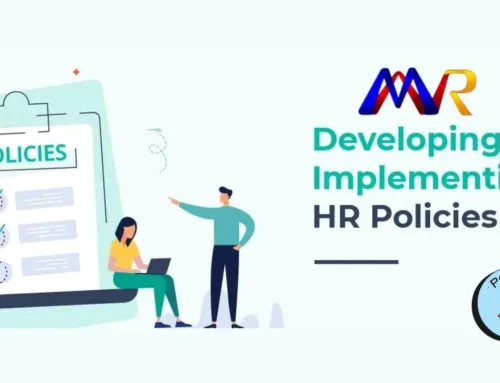What are the basic steps to writing a resume?
- Prepare by gathering your information.
- Choose a format and a resume template.
- Add your contact information to the resume header.
- Write a resume summary or objective statement.
- Make a resume work experience section.
- Create a resume skills section.
- Add your education credentials.
- Include certifications, licenses and training if applicable.
- Add optional resume sections if you have any.
- Proofread, save and send it!
MNR Solutions Provide Premium Staffing Agency
When to Use a Functional Resume:
Functional formats are ideal when you wish to emphasize certain skills that align with the job description, including volunteer experience or portfolio sections as desired. Including additional sections is also permitted and welcome.
When listing work experience, list positions in reverse chronological order with company, title and dates worked. Make a point of listing achievements rather than responsibilities when possible to impress employers. Quantify whenever possible for maximum impact.
Job Titles
Your resume should list your job titles in reverse chronological order, starting from your most recent. Also include brief descriptions for each position held such as company name, location and years of employment. When applicable and possible, emphasize key responsibilities and accomplishments within each role – for instance if applying for sales jobs you might list how many customers signed as customers and whether you met or exceeded sales quotas or goals.
Your education section should contain the name and dates of all schools that you attended as well as any certifications or licenses obtained. By adding keywords related to education into the professional experience section, your resume will more easily show up when searching by hiring managers or applicant tracking systems (ATSs).
Your resume should always use an easy-to-read font such as Times New Roman or Arial for regular text, with larger fonts used for headers, your name and sections of the resume. While ATS systems can read both serif and sans serif fonts, the former are preferred in order to ensure they understand each word’s meaning – at least 12 points should be the minimum font size required for optimal performance.
Chronological Format
If your resume relies on experience for its appeal, a chronological resume could be ideal. Hiring managers are familiar with this format, which allows recruiters to easily view your career history. Starting with recent work experiences and moving backwards in time is ideal; include information for each job such as title, company name, city/state of employment as well as duties and responsibilities for each position held – this ensures recruiters see your whole work history without missing anything important! Be sure to include both hard skills like computer and Microsoft Office proficiency alongside soft skills like strong communication and teamwork when creating your chronological resume!
Next comes your education section, which should be presented in reverse chronological order. If your education doesn’t apply directly to the position being applied for, consider skipping this section or using it as an opportunity to highlight some of your educational achievements. Typically, at the bottom of your resume should be listed any certifications earned within your field.
Some individuals worry that a chronological resume might look outdated when applying to positions in the same career field for which they have long worked. To address this concern, alternative formats, such as functional or combination resumes may provide more creative ways of highlighting your most valuable skills and accomplishments. No matter which format is chosen for each job application so as to demonstrate to recruiters or hiring managers exactly how your experience fulfills requirements of that position and separate you from competitors who possess similar credentials.
Functional Format
Functional formats, also known as skills-based resumes, highlight your professional strengths before detailing employment history. It can be an especially helpful format for job hunters with gaps in their employment history or who are entering new career fields; and those with limited work experience or no formal education.
Start off your functional resume by providing an enumeration of qualifications in no more than two or three paragraphs that focuses on the most pertinent skills and abilities. After that, list your employment history chronologically from most recent to oldest position held. Include each employer name, dates worked with them as well as brief summaries of responsibilities taken on and notable accomplishments achieved during each position held.
Include your GPA in the education section of your resume, along with any honors received during college. Also include a brief listing of technical skills; this section could showcase computer programs or languages you are proficient with or even categorize them according to specific job requirements.
Functional resume formats may make it more challenging to get past applicant tracking systems, so it is wise to tailor each resume specifically to each job application. This may mean changing your summary statement, reordering skill sections or including examples from nontraditional employment projects – whatever will best match up with the job description and make you stand out among other applicants – for instance a former carpenter could emphasize their apprenticeship-taught skills and training when writing their application.
Summary or Objective
An effective resume summary provides a great opportunity to introduce your professional experience and showcase the skills that set you apart from the competition. Make sure you include keywords from job descriptions that may help your resume get through applicant tracking systems (ATSs).
An effective resume summary provides the hiring manager with an concise snapshot of your qualifications that gives them a clear sense of who you are as a candidate. It’s particularly useful if your work history doesn’t directly correspond with the position or career change you’re applying for, or vice versa.
Make an objective statement instead of providing a summary to draw more interest, but be wary not to overdo it and appear arrogant or boastful.
Many hiring managers sift through hundreds of resumes every day, so a compelling professional summary can capture their interest and encourage further reading. A compelling professional summary also allows hiring managers to get a more accurate sense of your personality and skillset than can be gained from more detailed experiences listed in a work history section of your resume.
At entry-level jobs, typically only students or recent grads should include an objective. Otherwise, it may be better to skip it and focus on work history and skillset – if necessary an objective could always be added later via your cover letter.
Contact Information
Make sure your contact details are easily found and up-to-date, such as phone number, email address and LinkedIn profile. If you maintain a personal website or blog, link it here as well. Provide a brief summary of your professional accomplishments and key skills – for instance if you managed large teams or led projects previously – instead using action verbs like “achieved,” “delivered,” “increased,” or “led.” Adding tangible data such as revenue or profit increases are an effective way to show off these abilities.
Make sure to include any notable volunteer or community service work you have performed in your resume, as this is a great way to demonstrate your social responsibility and make up for a lack of work experience. Include these experiences under “Work Experience.”
Your resume must be easily scannable by HR managers and recruiters, making an impressionful first impression with HR departments and recruiters. Use a clean sans-serif font with an acceptable font size (between 10-12 points) as well as minimal graphics used. Use table format, bold text or italics sparingly as these techniques may create issues when scanning documents. Furthermore, make sure your resume is free of spelling or grammatical errors; double-check for mistakes with another person reading through it to help ensure nothing slips through. One typo can ruin your chances of landing an interview, so take time to carefully proofread your resume. Also consider sending in a cover letter as it provides more context about who you are as an applicant. Hiring practices have evolved significantly over time so it’s crucial to stay abreast of current job search trends.




